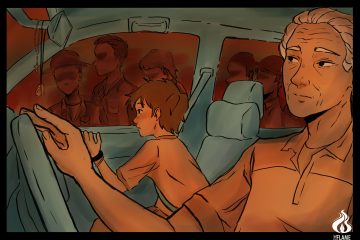
MILES AWAY from the country’s capital region, where daily living includes mobile phones and honking of cars, lay various pre-Hispanic traditions that still survive up to this day despite the speeding influence of modernity.
Cinemalaya 2016 Audience Choice Feature Film Tuos presents the clash between tradition and modernity by the use of allegories as an art drama. It tells of the ethnic customs and beliefs centering on the binukot or “kept maiden” still practiced today in Panay, Bukidnon. Written by Denise O’Hara, the story revolves around Pina-ilog, played by Philippine cinema’s Superstar Nora Aunor, who is an old binukot thrown at the crossroads between keeping their tradition alive and choosing the happiness of her granddaughter and successor, Dowokan, portrayed by Barbie Forteza.
The myth behind the tradition is revealed with the use of shadow play and the chanting of an actual binukot of their oral literature called Tikum Kadlum or “Black Dog.” Drone shots also give the viewers breathtakingly scenic views of the mountains, the transition between animation and impressive live shots adding to the mysticism of the story.
The film stayed truthful to the region’s linguistic authenticity with all the dialogues in Kiniray-a, adding English subtitles for the viewers to understand. Forteza’s performance is praiseworthy, as she spoke the regional language by heart, with emotion flowing naturally and without pretense. The characters display their intentions with less dialogue and more actions, silence being the primal element that builds tension and emotion.
Although the climax and resolution are fast-paced in contrary with the slow storytelling in the beginning, the film is heavy with symbolism. One scene shows two mirrors side-by-side, with Pina-ilog’s reflection seen on one and Dowokan’s reflection on the other to portray the distance between two clashing forces and the dualism of tradition and modernity, a woman bound by her own beliefs and another with the determination to break them.
The binukot is a representation of how the female is shackled in her own culture and tradition caused by a single male ancestor. It is an apparent portrayal of the descendant carrying the burden of her forefather and passing it to another female descendant for generations.
Tuos makes a mystical tale that not only emphasizes the underlying patriarchal influence leading to the communal view of the females as subversive and inferior, but it also exhibits the empowerment of the female character in order to free herself from the shackles of patriarchy upheld by hundreds of years of tradition. F DIANNE ALYSSA A. AGUIRRE



